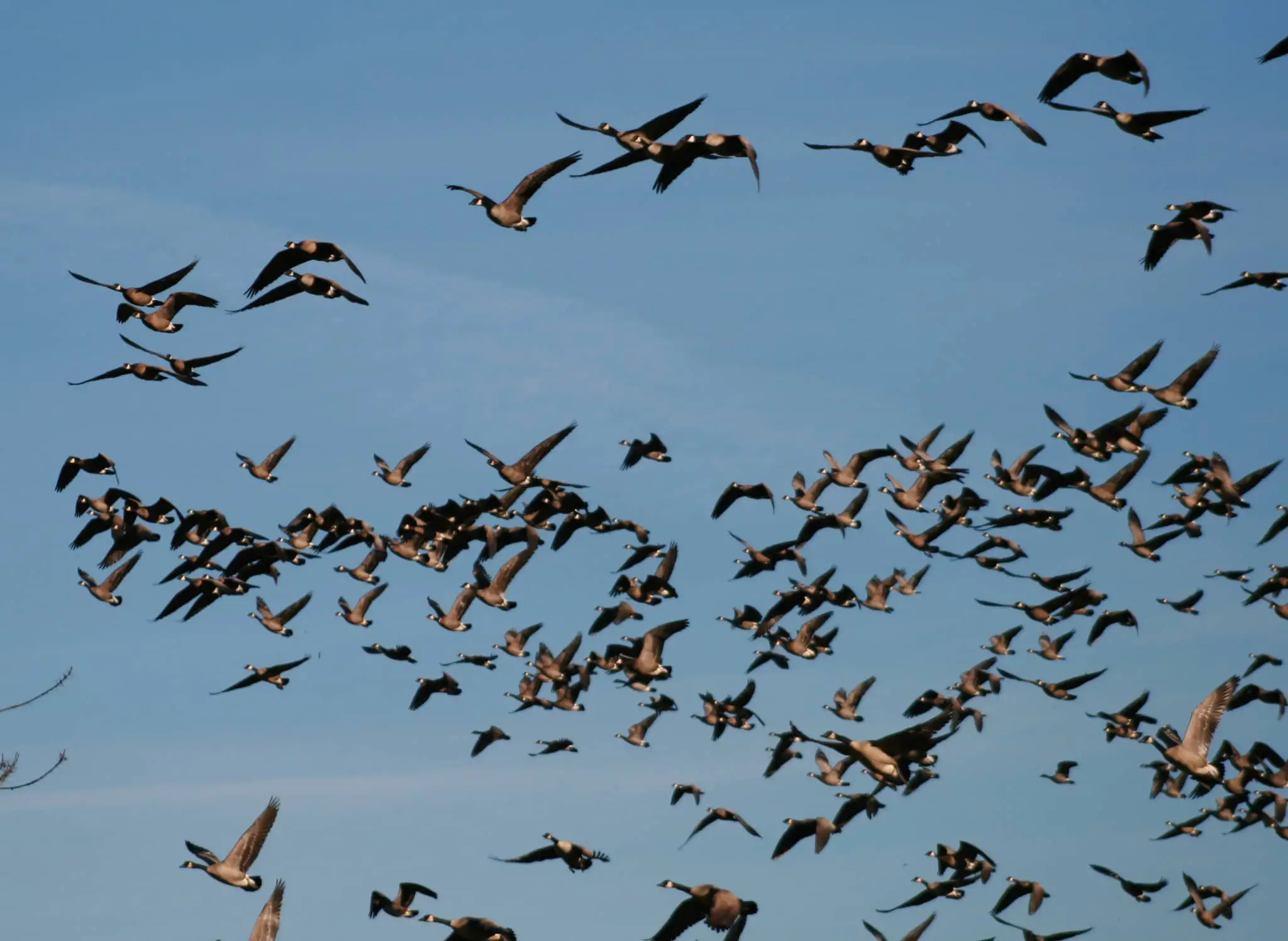Have you recently looked out of your Isle of Wight window and seen a mass of Geese flying past and wondered where they were off to?
Patricia is one such reader, who got in touch yesterday to say,
“I live in Godshill, and have been searching the Internet for any items about the influx of flying Geese. For over a week now there have been ‘swarms’ of Geese flying past my bedroom window.
“I first noticed it between 4pm and 5pm each evening, and thought it must be migrating Geese, however, just before dusk they all fly in the opposite direction again! This morning I heard them around 8am as well.
“Has anyone else reported sightings I wonder?”
Turn to the expert
Luckily for Patricia News OnTheWight was able to turn to Isle of Wight naturalist and BTO (British Trust for Ornithology) Regional Rep, Jim Baldwin, to see if he could help.
Jim is an expert on many elements of the natural world, and runs several Facebook Groups, including Wight Swifts, IOW Dragonflies and Damselflies, IOW Butterflies and Moths and IOW Birding.
600 roosting at Shalfleet
We asked Jim what he made of Patricia’s query and he was able to reply in a flash, letting us know,
“They are Canada Geese, not migrating. There is a flock of over 600 roosting at Shalfleet and then flying out to the cut fields to feed on spilt grain.
“Around 200+ commute from the Mainland. Once they have finished with the fields they will move to Brading Marsh RSPB Reserve.
“Last year they had around 1,200 in November before the Brent Geese arrived there. Canada Geese are increasing in numbers!”
A what of Geese?
When researching what to call a group of Geese in flight, we were surprised to learn the answer.
According to Wikipedia, the collective noun for a group of Geese on the ground is a gaggle; on water is a flock, when in flight, they are called a skein, a team, or a wedge; when flying close together, they are called a plump.
You learn something new every day.
Image: Tom Brandt under CC BY 2.0





